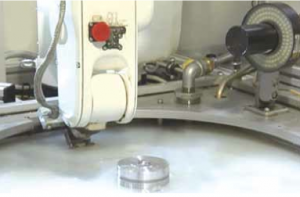 The development of a novel two-dimensional (2D) ultrasonic analysis system allows Federal-Mogul Corporation to create a new generation of high performance pistons that enable a substantial further step in diesel engine downsizing. In its first application, the greatly improved cooling capability of the company’s “raised gallery” piston allowed a Federal-Mogul customer to achieve a CO2 reduction of up to 30 per cent compared with the previous generation engine without raised gallery pistons.
The development of a novel two-dimensional (2D) ultrasonic analysis system allows Federal-Mogul Corporation to create a new generation of high performance pistons that enable a substantial further step in diesel engine downsizing. In its first application, the greatly improved cooling capability of the company’s “raised gallery” piston allowed a Federal-Mogul customer to achieve a CO2 reduction of up to 30 per cent compared with the previous generation engine without raised gallery pistons.
The first production application of Federal-Mogul’s raised gallery piston also delivers a specific power increase of 25 per cent, keeping the piston at temperatures much lower than the acceptable limit of 400°C. In the same conditions, a standard piston’s bowl rim stresses are 43 per cent higher and its temperature reaches 440°C.
“Diesel downsizing increases specific power output in order to improve fuel economy and CO2 emissions and also increases the thermal and mechanical loads that diesel pistons must withstand,” said Gian Maria Olivetti, Federal-Mogul’s Vice President for Technology and Innovation, Powertrain Energy. “With the development of new highly-loaded engines, the risk of piston failure has increased substantially as past improvements in materials, design and cooling concepts have reached their physical limits. Federal-Mogul’s innovation in advanced testing techniques, materials science and manufacturing processes greatly reduces the limitations placed on diesel downsizing strategies.”
Modern diesel pistons have a cooling gallery, through which oil flows continuously. The position and design of the gallery have a significant impact on the component’s operating temperature and durability. The closer the gallery is to the piston bowl, the more heat that can be removed, allowing engine manufacturers to increase combustion temperatures and pressures to improve fuel economy and CO2 emissions.
Standard, one-dimensional ultrasonic testing can identify defects but cannot quantify their size and position. Federal-Mogul’s 2D ultrasonic process, however, provides 125,000 data points in 30 seconds. The technique enables Federal-Mogul engineers to accurately determine the size and position of defects, providing valuable data for casting process development. The detailed information provided also ensures consistent quality in the finished high-precision components.
“In the past, it has been very difficult to cast a piston with optimal size and location of the cooling gallery,” said Dr. Frank T.H. Doernenburg, Federal-Mogul director of technology, pistons and pins. Federal-Mogul’s new 2D ultrasonic test has removed that barrier.
Federal-Mogul validated its 2D ultrasonic technology by dissecting and sampling hundreds of pistons, correlating the ultrasonic images against destructive testing methods. The research resulted in the development of software tools as well as a number of key physical parameters such as probe geometry, wavelength, beam geometry and focus.
Piston performance can be increased significantly through Federal-Mogul’s 2D ultrasonic testing and analysis process, which is quickly becoming an enabling technology for more efficient powertrains.